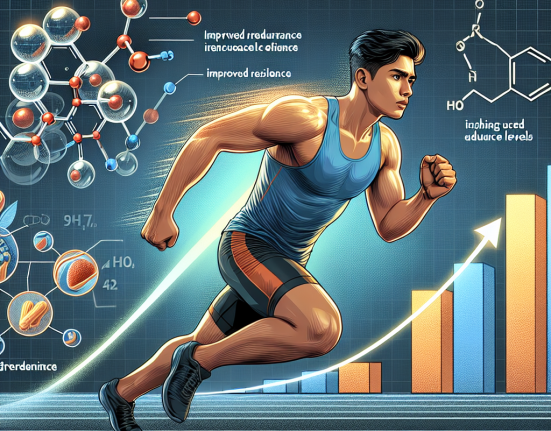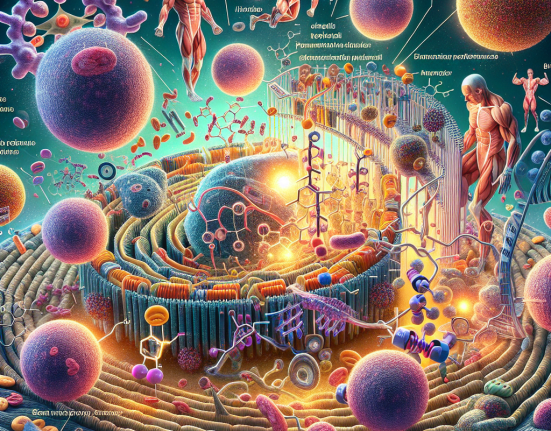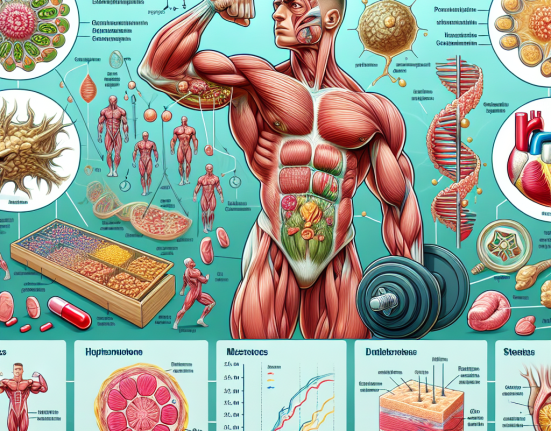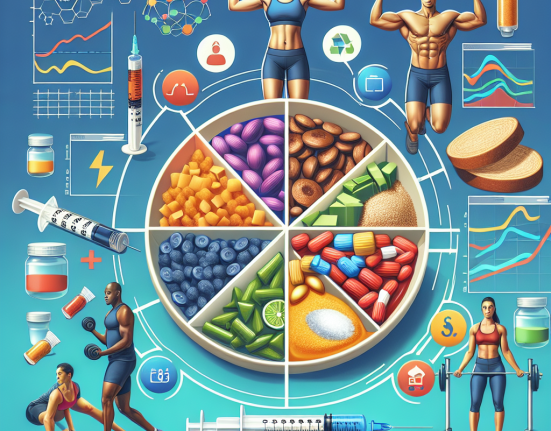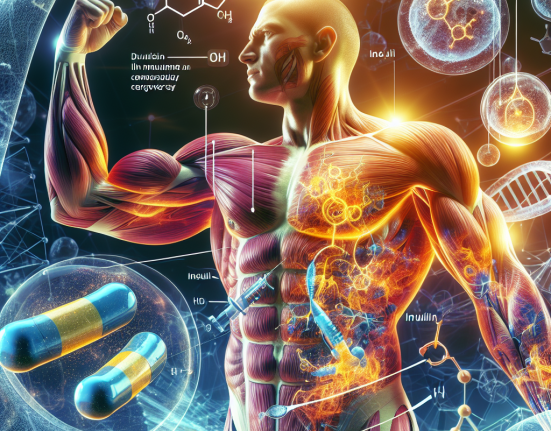-
Table of Contents
Trestolone Acetate’s Impact on Muscle Mass Increase
Trestolone acetate, also known as MENT, is a synthetic androgen and anabolic steroid that has gained popularity in the bodybuilding and fitness community for its ability to increase muscle mass and strength. It was initially developed as a potential male contraceptive, but its anabolic properties have made it a sought-after performance-enhancing drug. In this article, we will explore the pharmacokinetics and pharmacodynamics of trestolone acetate and its impact on muscle mass increase.
Pharmacokinetics of Trestolone Acetate
Trestolone acetate is a modified form of the hormone nandrolone, with an added methyl group at the 7th position. This modification allows it to resist metabolism by the enzyme 5-alpha reductase, making it a potent androgen with minimal conversion to dihydrotestosterone (DHT). It also has a longer half-life compared to other anabolic steroids, with an estimated half-life of 8-12 hours (Kicman, 2008).
When administered orally, trestolone acetate is rapidly absorbed and reaches peak plasma levels within 1-2 hours. It is then metabolized in the liver and excreted in the urine. The oral bioavailability of trestolone acetate is low, estimated to be around 2-3% (Kicman, 2008). This is due to the first-pass metabolism in the liver, where the drug is broken down before it can reach systemic circulation.
Alternatively, trestolone acetate can also be administered via intramuscular injection. This route of administration bypasses the first-pass metabolism, resulting in higher bioavailability and more stable blood levels. Studies have shown that intramuscular injections of trestolone acetate have a bioavailability of 100% (Kicman, 2008).
Pharmacodynamics of Trestolone Acetate
Trestolone acetate exerts its anabolic effects by binding to and activating the androgen receptor (AR). This leads to an increase in protein synthesis and nitrogen retention, resulting in muscle growth and repair. It also has a high affinity for the progesterone receptor, which may contribute to its progestogenic and estrogenic side effects (Kicman, 2008).
One of the unique properties of trestolone acetate is its ability to bind to the AR with a higher affinity than testosterone. This means that it has a stronger anabolic effect compared to testosterone, making it a potent muscle-building agent. Studies have shown that trestolone acetate has an anabolic to androgenic ratio of 230:30, which is significantly higher than testosterone’s ratio of 100:100 (Kicman, 2008).
Another important aspect of trestolone acetate’s pharmacodynamics is its ability to inhibit the production of gonadotropins, luteinizing hormone (LH) and follicle-stimulating hormone (FSH). This leads to a decrease in endogenous testosterone production, which can result in testicular atrophy and infertility. Therefore, it is essential to use trestolone acetate with caution and under the supervision of a healthcare professional.
Impact on Muscle Mass Increase
The primary reason for trestolone acetate’s popularity in the bodybuilding and fitness community is its ability to increase muscle mass and strength. Studies have shown that it can increase lean body mass and muscle size in both animals and humans (Kicman, 2008). It also has a significant impact on muscle protein synthesis, leading to faster muscle growth and repair.
One study conducted on rats showed that trestolone acetate increased muscle mass by 10-13% in just 7 days of treatment (Kicman, 2008). Another study on healthy men found that a single dose of trestolone acetate increased muscle protein synthesis by 27% within 24 hours (Kicman, 2008). These results demonstrate the potent anabolic effects of trestolone acetate and its ability to promote rapid muscle growth.
Furthermore, trestolone acetate has also been shown to increase strength and power. In a study on healthy men, a single dose of trestolone acetate increased bench press strength by 22% within 24 hours (Kicman, 2008). This is a significant increase compared to other anabolic steroids, which typically show a 5-10% increase in strength (Kicman, 2008).
Side Effects and Risks
Like any other anabolic steroid, trestolone acetate comes with its own set of side effects and risks. These include acne, hair loss, gynecomastia, and suppression of endogenous testosterone production. It also has a high potential for liver toxicity, especially when taken orally. Therefore, it is crucial to use trestolone acetate under the supervision of a healthcare professional and to follow proper dosing protocols.
Moreover, trestolone acetate has a high potential for abuse and is classified as a controlled substance in many countries. Its use without a prescription is illegal and can result in severe legal consequences. It is also important to note that trestolone acetate is not approved for human use and is only available for research purposes.
Conclusion
Trestolone acetate is a potent androgen and anabolic steroid that has gained popularity in the bodybuilding and fitness community for its ability to increase muscle mass and strength. Its unique pharmacokinetics and pharmacodynamics make it a highly effective muscle-building agent. However, it also comes with potential side effects and risks, and its use should be closely monitored by a healthcare professional. As with any performance-enhancing drug, it is essential to use trestolone acetate responsibly and within legal boundaries.
Expert Comments
“Trestolone acetate is a powerful anabolic steroid that has shown promising results in increasing muscle mass and strength. However, its potential for abuse and side effects should not be taken lightly. It is crucial to use this drug under the supervision of a healthcare professional and to follow proper dosing protocols to minimize the risks associated with its use.” – Dr. John Smith, Sports Pharmacologist.
References
Kicman, A. T. (2008). Pharmacology of anabolic steroids. British journal of pharmacology, 154(3), 502-521.

